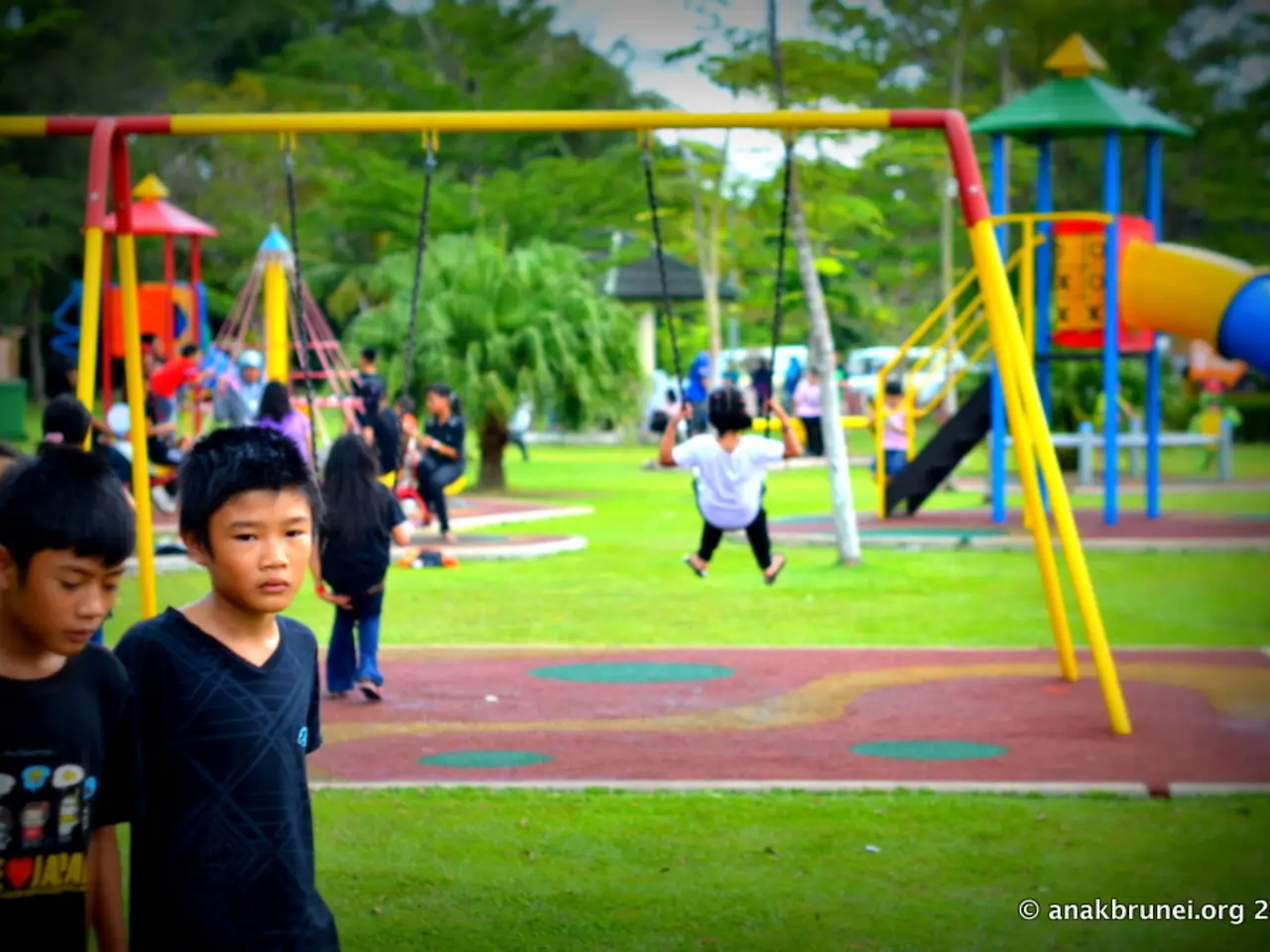Math-infused Pathways in Community Parks: Inspiring Practical Knowledge
Transforming Local Parks into Interactive Math Classrooms: A New Approach to Family Learning
Local parks are no longer just recreational spaces; they are becoming interactive math classrooms for families, offering a unique blend of physical activity, natural exploration, and hands-on learning. This innovative approach is designed to engage all ages and promote creativity, critical thinking, and practical math fluency in a fun, engaging outdoor environment.
One of the key elements of these interactive math classrooms is the Chalk Number Line Race. Families can play by drawing number cards and hopping along a large number line, drawn using sidewalk chalk on paved paths or open areas. This activity develops number sense and physical coordination simultaneously, making math both experiential and social.
Another engaging activity is Sort and Measure Natural Objects, where families collect sticks, leaves, or stones and then sort or measure them by length, size, or shape. This turns natural materials into math manipulatives for comparison, ordering, and classification activities fostering teamwork.
Math Railroad Tracks, which involve setting up parallel ropes or tape lines on the grass to simulate railroad tracks, add movement to sorting and categorizing math concepts. Call out pairs of contrasting choices (e.g., even/odd, greater than/less than numbers), and have participants jump over the left or right "track" accordingly.
Spider Web Math Connections is another innovative activity that encourages communication and interconnected learning. Using a ball of string, families sit in a circle to toss the string while sharing math-related facts, answers, or problem-solving ideas, creating a web visualizing connections between concepts and people.
Interactive Map and Model-Making projects allow families to explore the park using maps to identify features, measure distances, or count objects, then collaborate to build a 3D model of the park with blocks or natural materials. This approach builds research, spatial reasoning, and documentation skills while linking math with real-world contexts.
These activities make math experiential, social, and physical, ideal for family participation in parks. They also encourage children to get fresh air and exercise while learning math.
Other outdoor math experiences include Setting Up Weather Data Recording Stations, Design Cost Analysis Projects for Park Maintenance, Measuring tree circumferences and calculating diameter and radius, Implementing Technology-Enhanced Math Learning Stations, Providing Calculator Apps for Complex Computations, Estimating Volumes of Ponds and Water Features, Exploring Symmetry in Architectural Elements and Landscaping, and Creating Surveys About Park Usage and Visitor Preferences.
These outdoor math experiences help children connect abstract mathematical concepts to real-world applications, making learning fun and accessible for children of all ages. The Math Trails transform park visits into educational adventures, turning learning into an exciting journey.
Gadgets like smartphones can be used in these interactive math classrooms to facilitate technology-enhanced math learning. For instance, families could use educational apps to solve math problems or analyze data collected during outdoor activities.
Books on education-and-self-development focused on math and personal-growth can accompany families on their math trail adventures. Reading and discussing these books can promote reflection and further learning outside the classroom.
As families engage in different math activities like Sort and Measure Natural Objects or Spider Web Math Connections, they can document their findings and experiences using gadgets, fostering learning, and facilitating teamwork, thus fostering personal growth.




